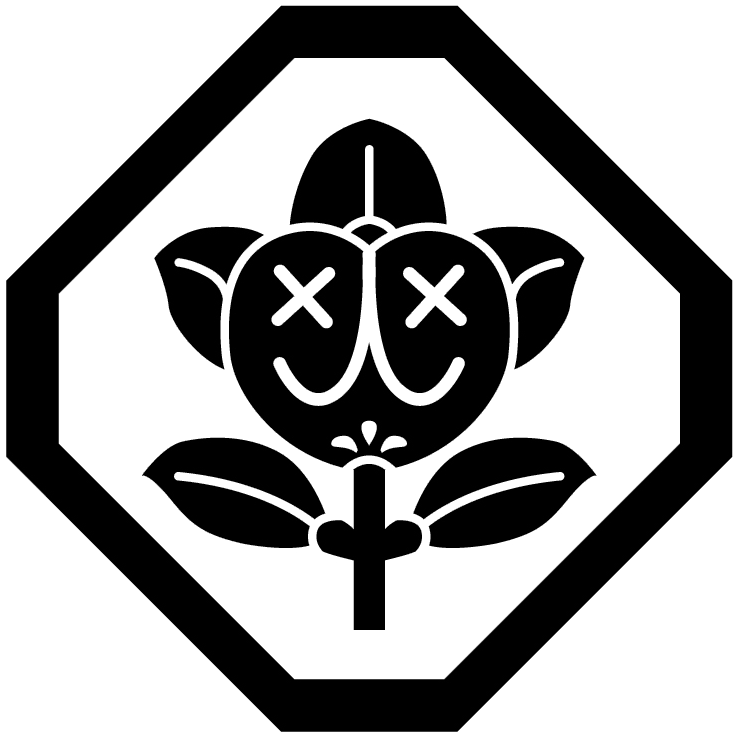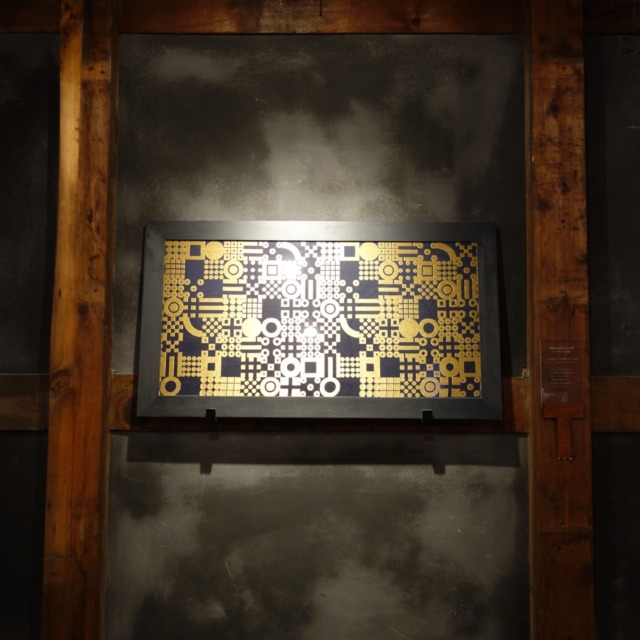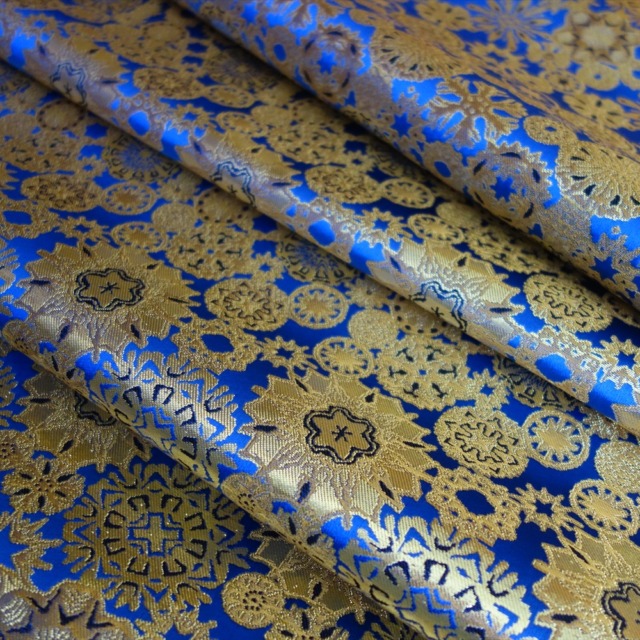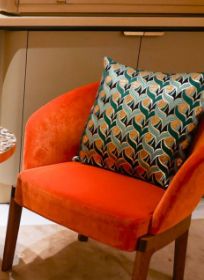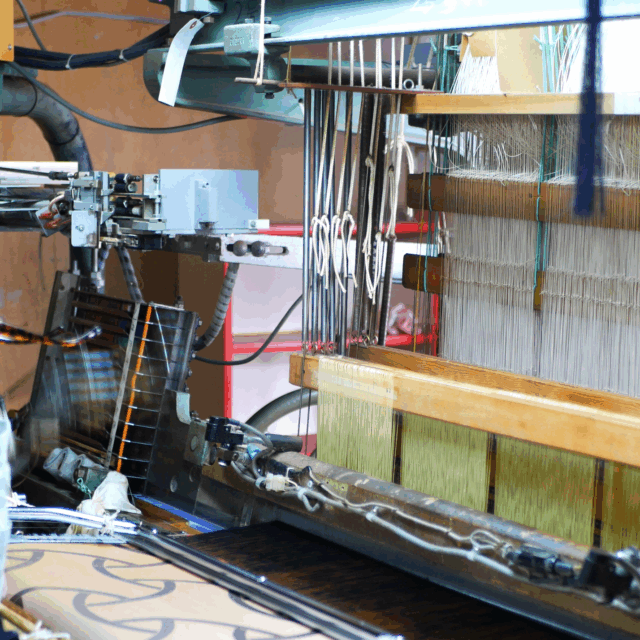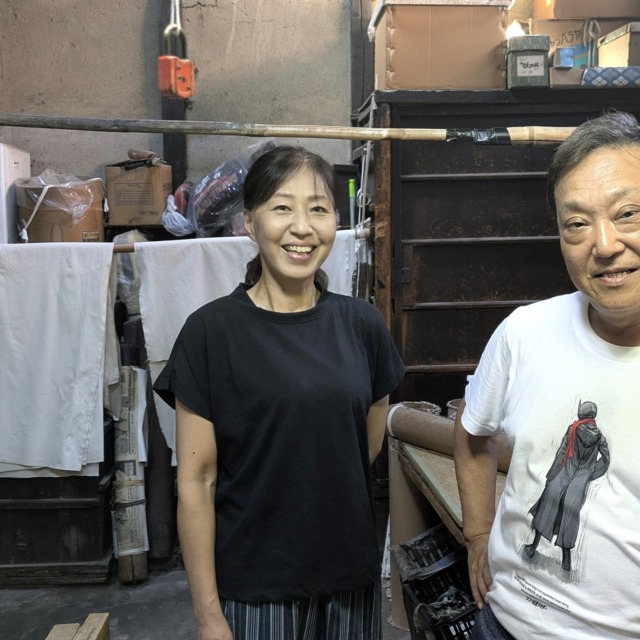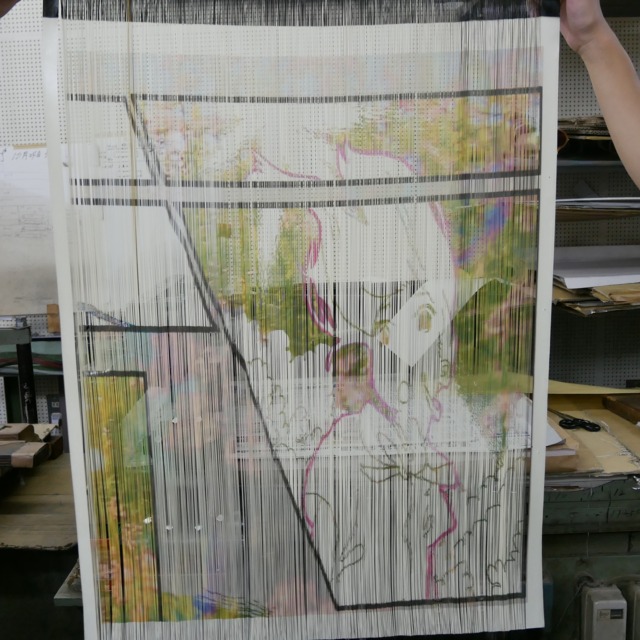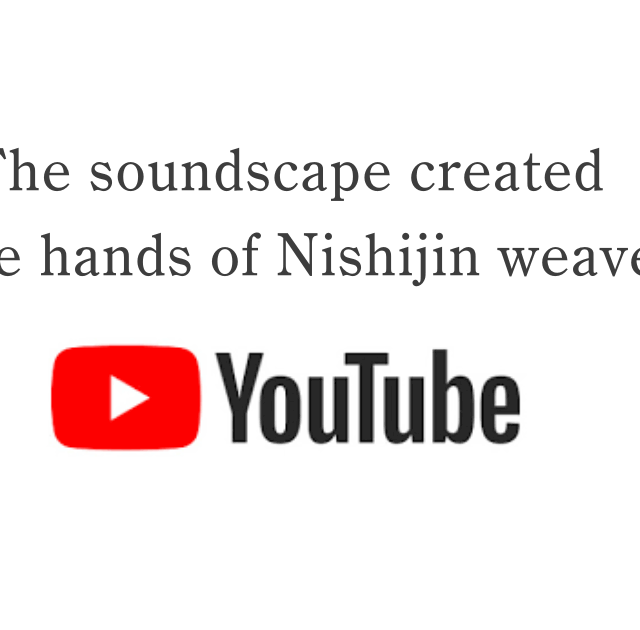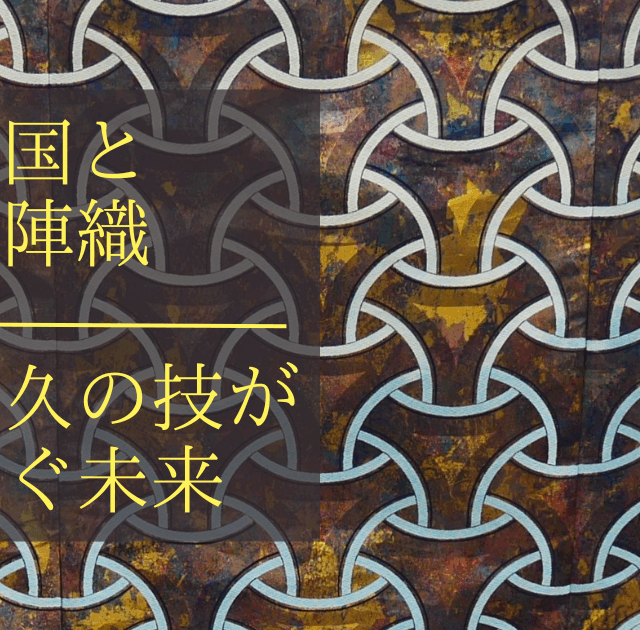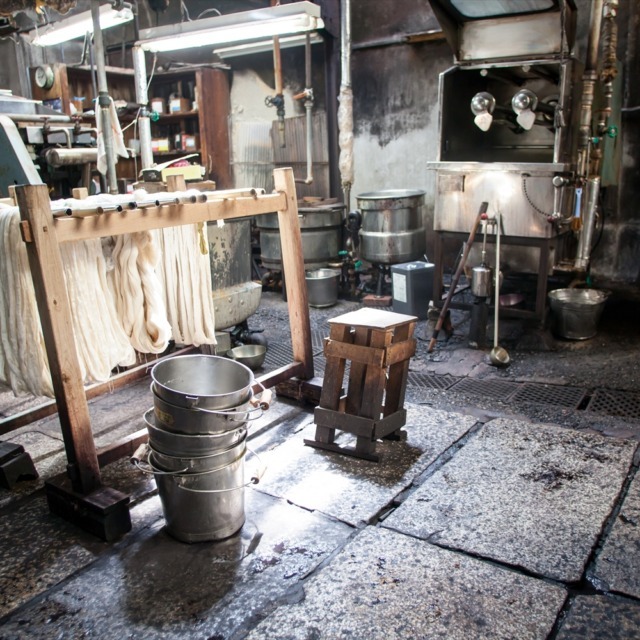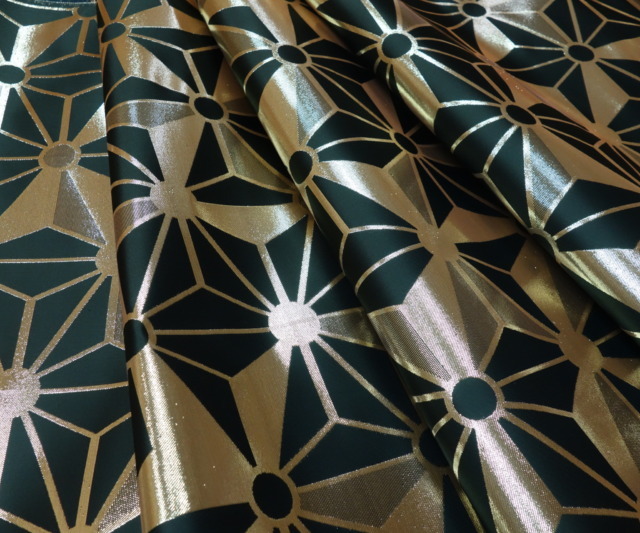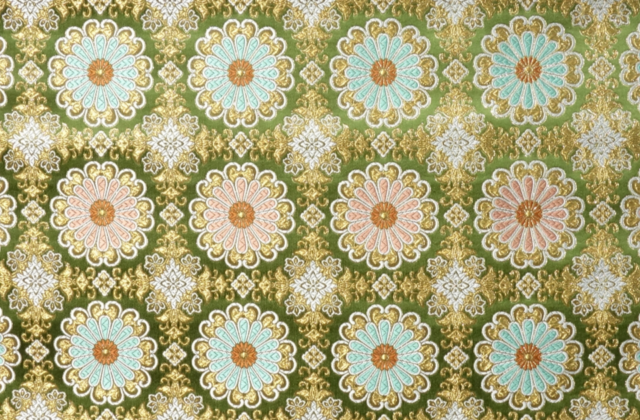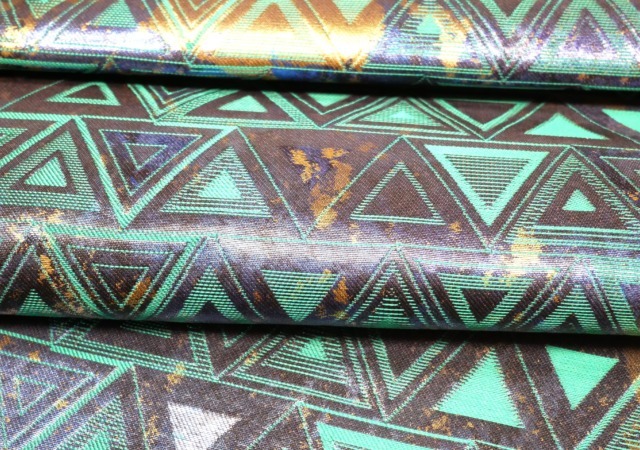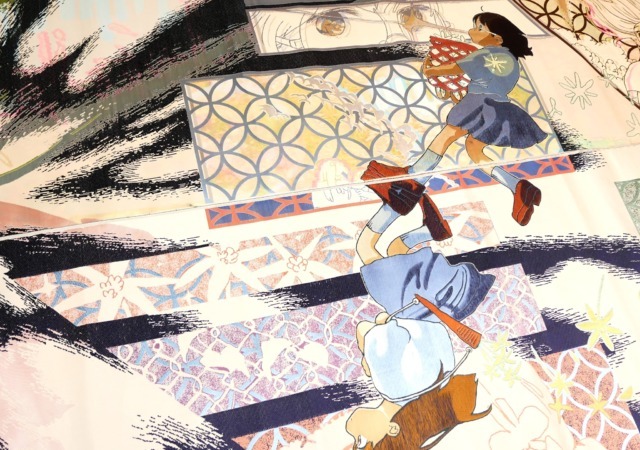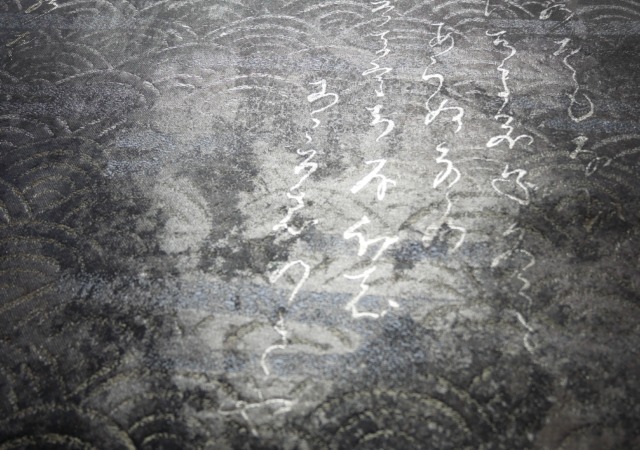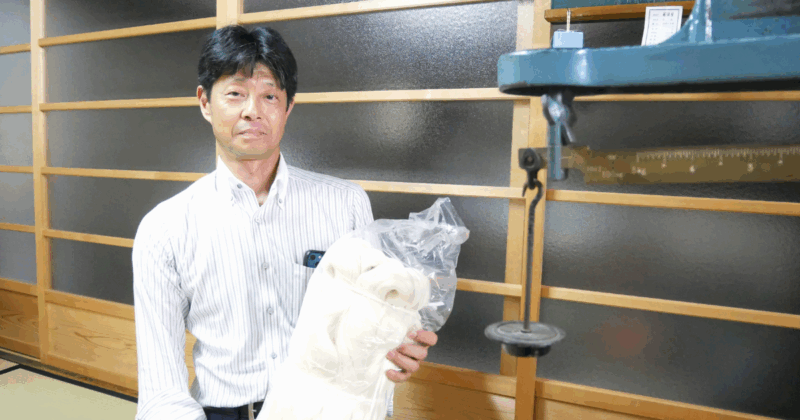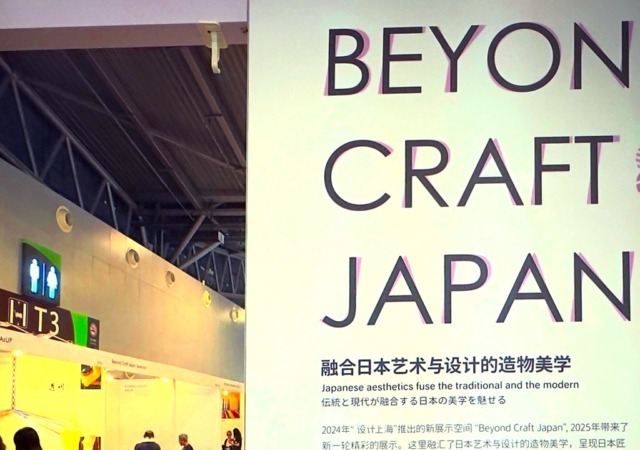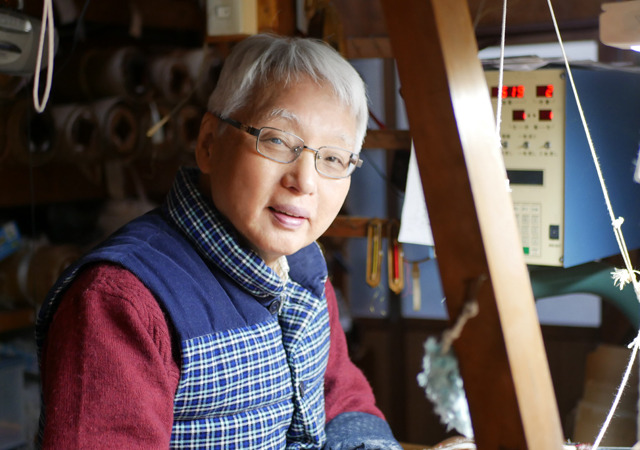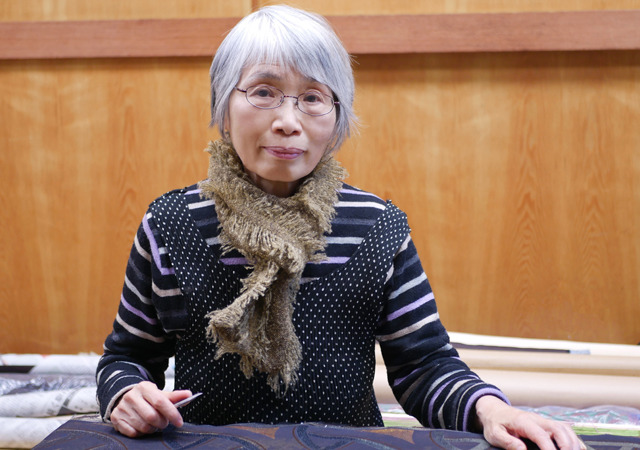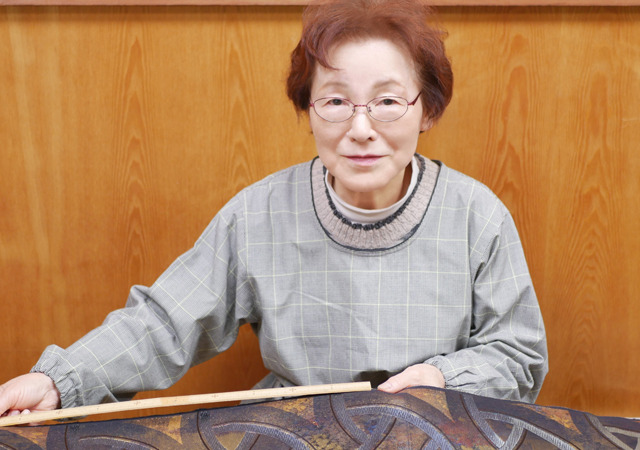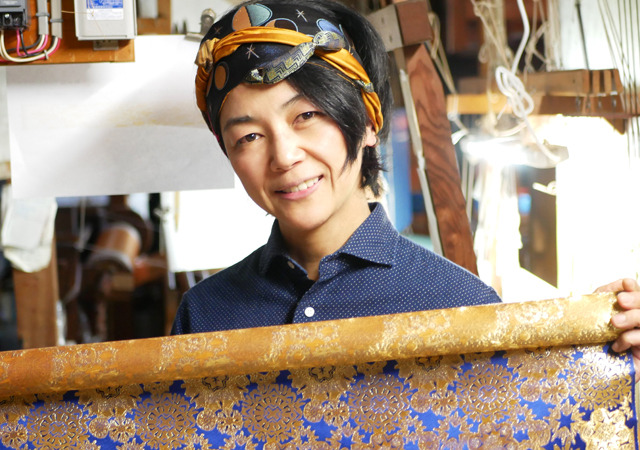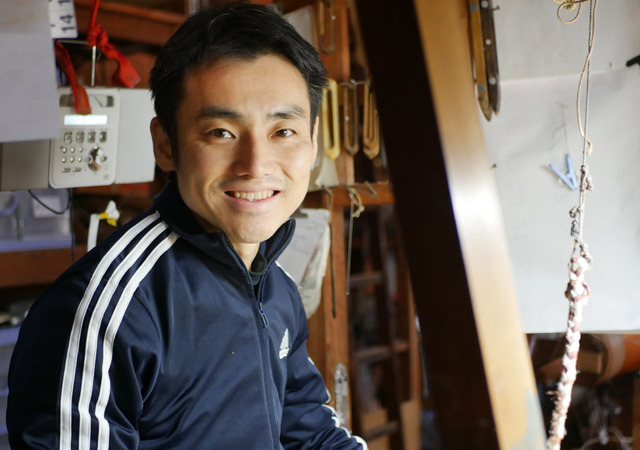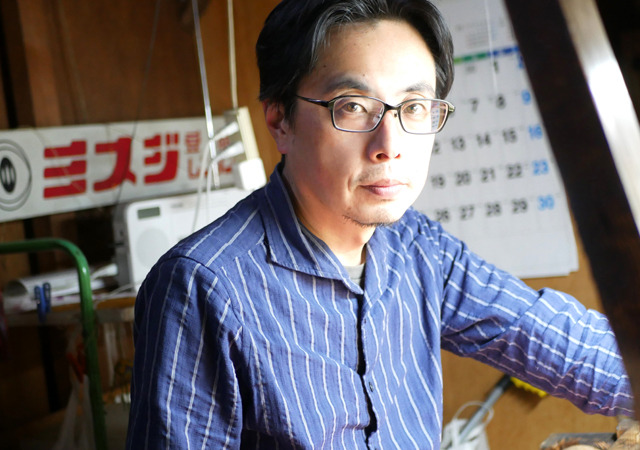We want to convey the idea that it takes the combined efforts of many artisans to create a single piece of Nishijin-ori. At Nishijin Okamoto, we occasionally share the voices of the artisans who support this tradition.
How is Nishijin-ori woven? Nishijin-ori is created through the meticulous handiwork of many artisans, including weavers, thread makers, dyers, and warpers. In this article, we will focus on one such artisan involved in Nishijin.
The person featured in this article is Mr. Nakaoka, the fourth-generation president of Sankou Co., Ltd., a silk thread shop in the Kamigyo Ward of Nishijin that has been in business for 132 years.
Hideo Nakaoka, Sankou(蚕光) Co., Ltd.
A Nishijin weaving thread shop talks about the most important thing they value: ‘trust.’
As a thread manufacturer, what we value most is ‘trust.’ By being involved in the process from the very beginning, when the thread is first made, we earn the trust of our customers. This is the essence of what it means to be a thread manufacturer in Nishijin.
The most rewarding moment in our work is when customers say, ‘This is a fine thread,’ ‘It’s easy to work with,’ or ‘It wove beautifully.’ When customers tell us that switching to our thread has improved their results, it reaffirms our commitment to this craft. We see the daily accumulation of our efforts as a testament to the trust we have built with our customers.
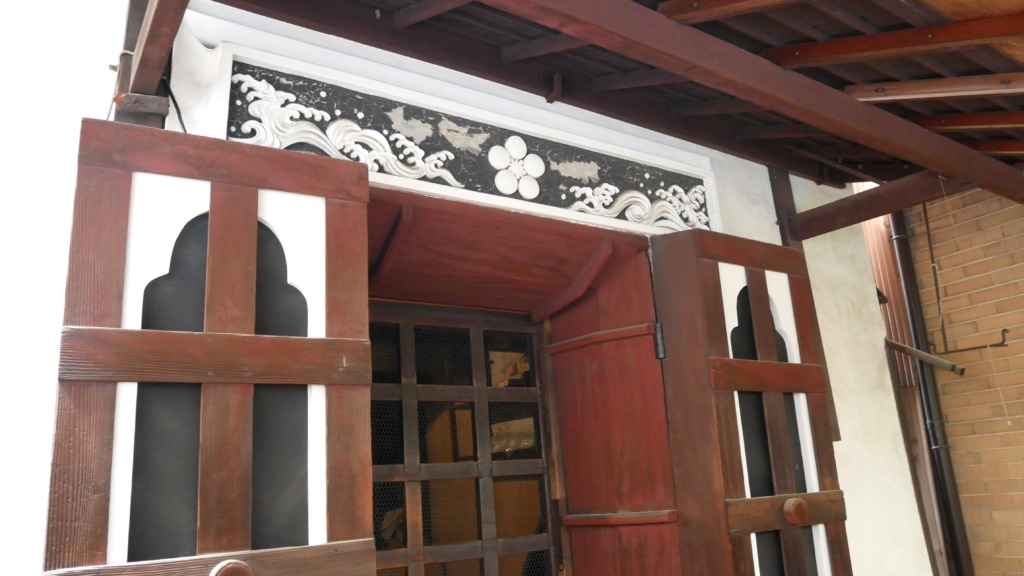
Carrying on the family business of a Nishijin silk thread shop
I didn’t grow up in an environment where work and home were integrated, so when I was a child and asked my father, ‘What do you do for a living?’ he would reply, ‘I work at a thread shop in Nishijin.’ That was my first memory of our family business.
When I was young, I never considered taking over the family business. After graduating from university, I worked as a systems engineer in Tokyo, developing systems for banks and other companies. At the time, personal computers were not yet widespread, and I was working with large computers to manage systems—a world completely different from my family’s business.
It wasn’t that I disliked that job. However, as I approached 30, I began to feel that if I wanted to return to Kyoto as a thread shop owner, now was the time. So I returned to Kyoto.
One of the things I’m glad about returning to Kyoto is the shorter commute. When I was in Tokyo, it took me an hour and a half to get to work, but now I don’t have to worry about that. The scale and atmosphere of Kyoto are also very pleasant, and my body feels much more relaxed.
As our company name, “Silkworms Shine,” suggests, we have been handling silk thread for generations.In our silk shop, ‘raw silk’ refers to silk thread that has not been twisted. The process from silkworm farming to raw silk falls under the jurisdiction of the Ministry of Agriculture, Forestry and Fisheries as an agricultural product. Twisted silk thread is called ‘twisted silk’ or ‘silk thread’ and is classified as a processed product under the jurisdiction of the Ministry of Economy, Trade and Industry.
We purchase raw silk and process it into spun silk to produce silk thread. The silk thread we sell is in its unrefined state, still containing sericin. We collaborate with spun silk factories in Ishikawa Prefecture and Kyoto City to transform raw silk into spun silk. This video shows the process of spinning raw silk into spun silk at the Sawada Spun Silk Factory in Kyoto City.
Thread is beautiful, but it is very difficult to work with. When I joined the family business, there were my father, my uncle, and several veteran employees, so I learned a lot from them.
In the early days after joining the company, I visited dyeing and weaving shops to learn about the business. It took time, but after a while, I became accustomed to handling thread and was able to perform various tasks such as splitting thread.
When I first joined the company, the weavers in Nishijin were all from an older generation, and it was challenging to build relationships with them. They were all masters of their craft, after all. I think the older generation had a strong passion for thread.
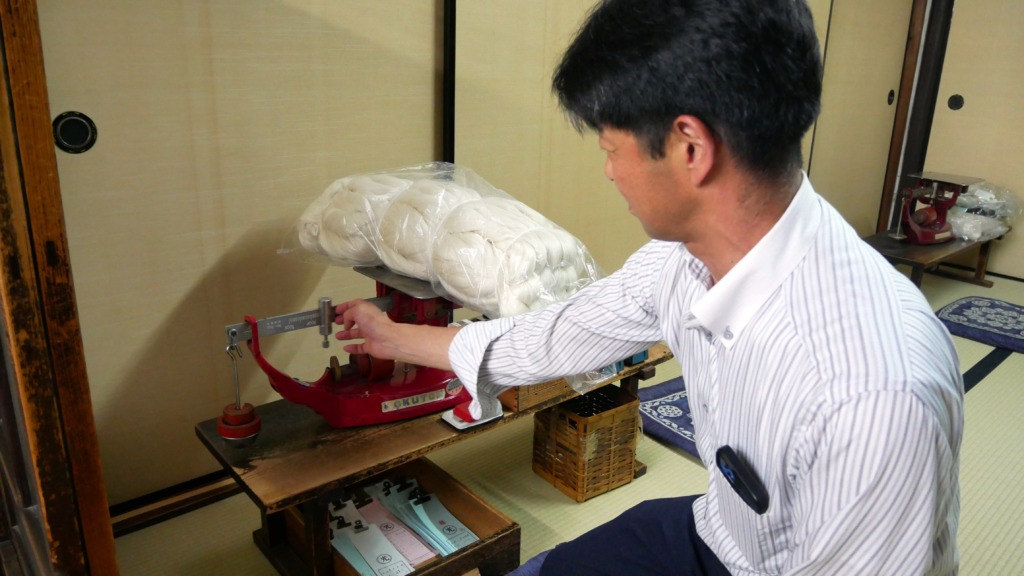
Changes in the environment surrounding Nishijin
The environment surrounding Nishijin is changing. When I first joined the company, about half of the thread we handled was made in Japan. Now, almost all of it is made in China, and Japanese thread has become very rare.
When I first joined the company, I never imagined that the scale of Nishijin as a weaving district would shrink to this extent. Since I started working here, the number of weaving shops in Nishijin has decreased to about one-tenth of what it was. In terms of production volume, it has probably dropped to less than 5%. As the weaving industry in Nishijin relies on specialisation, I feel a strong sense of crisis if the decline continues.
Silk is a natural fibre that has been used for centuries, known for its strength and beauty. However, compared to synthetic fibres, it is difficult to dye and weave, making it unsuitable for industrial production. Unless we find ways to add value and maintain production even in small quantities, I believe the production of silk and silk textiles will continue to decline. To produce high-quality silk thread, it is necessary to select the best cocoons from a large number of them and process them into silk.To produce high-quality silk, many sericulture farmers must raise a large number of silkworms. Unless there is a system in place where sericulture is profitable, the number of sericulture farmers will continue to decline.
Looking at the global market, there is still potential for expanding the demand for silk. If Nishijin does not explore new markets, I believe the future of Nishijin as a silk-producing region will be challenging.However, there are many weavers in Nishijin who are already making new efforts. From my position as someone who handles silk thread, I would like to support such weavers.
The charm of silk thread is endless. Silk cocoons can be used to the very last bit without waste. In today’s world where SDGs are being emphasised, I hope the importance of silk, a natural fibre, will continue to grow.
Sankou Co., Ltd.
Location: 165 Motokita-koji-cho, Omiya-nishi-iru, Imadegawa-dori, Kamigyo-ku, Kyoto-shi, Kyoto 602-8448
(Interviewed on 16th and 24th July 2025 / Text, photos, and videos by Ema Okamoto)
Editor’s note
The silk threads that the author, who works at a Nishijin-ori weaving workshop, sees and touches every day. I visited a ‘twisting factory’ for the first time. The process of slowly twisting the threads at a slower speed than I had imagined was beautiful.Despite the relentless heatwave with extreme heat warnings, Mr. Nakaoka, the president of San’ko, kindly shared his insights and accompanied me during the twisting process, and Mr. Sawada, the president who allowed me to observe the facility, were both very gracious. Witnessing the twisting process deepened my appreciation for the delicacy of silk threads and the profound skill of the artisans. It was an incredibly enjoyable experience.

Next time, we will feature the voice of a dyeing artisan.
You can find previous artisan interviews here.
